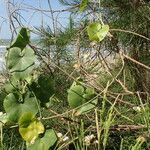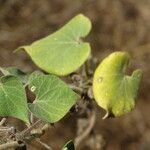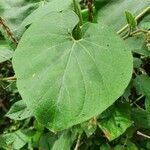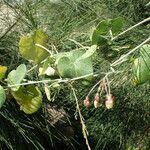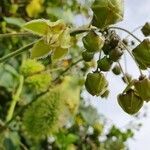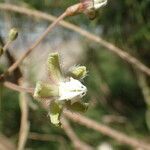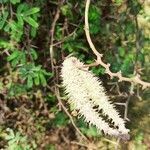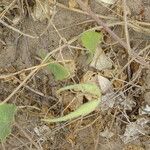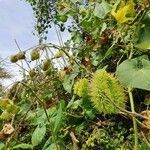| Therapeutic use
|
Analgesics (aerial part), Anthelmintics (aerial part), Anti-inflammatory agents (aerial part), Antipyretics (aerial part), Common cold (aerial part), Contraceptive agents (aerial part), Diabetes mellitus (aerial part), Diarrhea, infantile (aerial part), Expectorants (aerial part), Laxatives (aerial part), Liver diseases (aerial part), Malaria (aerial part), Toothache (aerial part), Cathartics (bark), Anthelmintics (flower), Antifungal agents (flower), Emetics (flower), Expectorants (flower), Dyspepsia (fruit), Amenorrhea (leaf), Anthelmintics (leaf), Anti-bacterial agents (leaf), Antifungal agents (leaf), Antirheumatic agents (leaf), Arthralgia (leaf), Asthma (leaf), Carbuncle (leaf), Common cold (leaf), Cough (leaf), Diarrhea (leaf), Diarrhea, infantile (leaf), Dysmenorrhea (leaf), Edema (leaf), Emetics (leaf), Expectorants (leaf), Furunculosis (leaf), Helminthiasis (leaf), Hemorrhoids (leaf), Jaundice (leaf), Leprosy (leaf), Pain (leaf), Rheumatic diseases (leaf), Snake bites (leaf), Wounds and injuries (leaf), Miliaria (plant exudate), Ulcer (plant exudate), Wounds and injuries (plant exudate), Common cold (rhizome), Cathartics (root), Laxatives (root), Abortifacient agents (seed), Antifungal agents (seed), Fever (shoot), Abortifacient agents (stem), Antifungal agents (stem), Common cold (stem), Amenorrhea (unspecified), Asthma (unspecified), Catarrh (unspecified), Diarrhea (unspecified), Dysmenorrhea (unspecified), Expectorant (unspecified), Rheumatism (unspecified), Swelling (unspecified), Uterotonic (unspecified), Vermifuge (unspecified), Bactericide (unspecified), Emetic (unspecified), Musculotropic (unspecified), Aparturation (unspecified), Carbuncle (unspecified), Purgative (unspecified), Urogenital (unspecified), Anthelmintics (unspecified), Antidepressive agents (unspecified), Antipyretics (unspecified), Antirheumatic agents (unspecified), Anuria (unspecified), Common cold (unspecified), Cough (unspecified), Diabetes mellitus (unspecified), Diarrhea, infantile (unspecified), Dystocia (unspecified), Dysuria (unspecified), Emetics (unspecified), Expectorants (unspecified), Female urogenital diseases (unspecified), Inflammation (unspecified), Kidney calculi (unspecified), Laxatives (unspecified), Menstruation disturbances (unspecified), Menstruation-inducing agents (unspecified), Rheumatic diseases (unspecified), Toothache (unspecified), Urinary bladder calculi (unspecified), Urination disorders (unspecified), Uterine diseases (unspecified), Uterine hemorrhage (unspecified), Urethral discharge (unspecified), Irritant (unspecified), Anthelmintics (whole plant), Asthma (whole plant), Constipation (whole plant), Digestive system diseases (whole plant), Dysuria (whole plant), Emetics (whole plant), Expectorants (whole plant), Genital diseases, female (whole plant), Inflammation (whole plant), Skin diseases (whole plant)
|
